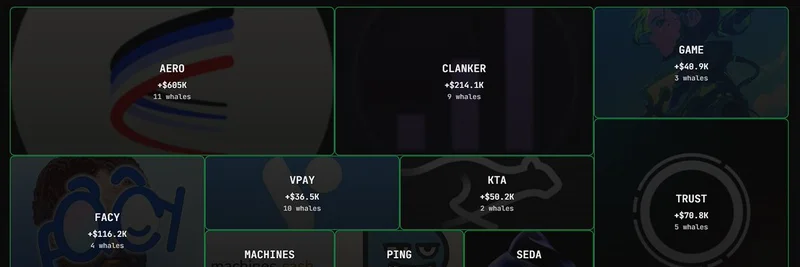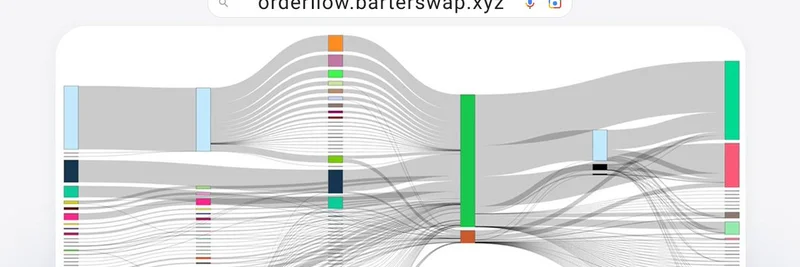In the fast-paced world of cryptocurrency, where Bitcoin has long reigned as the ultimate digital store of value (SoV), new contenders are emerging with fresh strategies to achieve mainstream adoption. A recent post on X by Matty Tay, co-founder of Colosseum and a former Solana team member, highlights two promising projects: Ore on Solana and Zcash. Tay argues that these tokens are charting unique courses to "escape velocity"—that critical point where they gain unstoppable momentum—different from Bitcoin's journey.
Here's the key insight from his post: "The path to escape velocity for a new non-sovereign SoV will be different than the path Bitcoin took. For Zcash, vertically integrating privacy through ZKPs and scaling its own L1 via Tachyon is one path. For Ore, generating value (revenue + yield) that flows from short term players to long term holders and natively inheriting Solana’s ongoing performance/privacy/composability improvements is another path."
He wraps up with a bold prediction: "I don’t know for sure if Zcash and Ore will reach escape velocity. But I do know Bitcoin will not be the only digital SoV to reach mainstream adoption in this decade."
Accompanying the post was a striking chart showing Ore's daily protocol revenue skyrocketing, underscoring its growing economic viability.
What Makes a Digital Store of Value?
Before diving deeper, let's break down what a "store of value" means in crypto. Simply put, an SoV is an asset that holds or increases its worth over time, like gold or Bitcoin. It needs scarcity, durability, and widespread trust. Bitcoin achieved this through its fixed supply of 21 million coins, decentralized network, and proof-of-work mining. But as the space evolves, projects like Ore and Zcash are innovating to address limitations like scalability, privacy, and user incentives.
Ore on Solana: Revenue-Driven Growth and Ecosystem Integration
Ore stands out as a proof-of-work (PoW) token built directly on the Solana blockchain. Unlike traditional PoW coins that require massive energy consumption, Ore uses a fair mining protocol that's accessible—even from a laptop or phone. As explained on Phantom's blog, Ore embodies permissionless cash, allowing anyone to mine without exclusive rewards, meaning multiple miners can win blocks simultaneously.
What sets Ore apart in the SoV race? Its ability to generate real revenue that benefits long-term holders. Short-term players, like miners chasing quick gains, contribute fees and yields that flow back to committed stakeholders. Recent data from DefiLlama shows Ore hitting a daily revenue of over $316,000, a new all-time high that aligns with the upward trend in the chart. This revenue model creates a self-sustaining economy, where value accrues over time.
Plus, Ore rides on Solana's coattails. Solana is known for its high speed, low costs, and ongoing upgrades in performance, privacy, and composability (the ability for apps to seamlessly interact). By inheriting these improvements, Ore doesn't have to build everything from scratch—it's like getting free upgrades to your car every year.
For blockchain practitioners, Ore offers a hands-on way to engage with PoW mechanics on a PoS chain like Solana. If you're into meme tokens, Ore's viral mining community has a similar grassroots energy, making it a bridge between utility and fun in the ecosystem.
Zcash: Privacy at Scale with Tachyon
On the other side, Zcash focuses on what it does best: privacy. Using zero-knowledge proofs (ZKPs)—a tech that lets you prove something is true without revealing details—Zcash enables fully private transactions. But to reach SoV status, it needs to scale.
Enter Tachyon, a scaling initiative that's reimagining how Zcash wallets sync with the blockchain. As detailed in Sean Bowe's blog, Tachyon uses "oblivious synchronization" to boost throughput to thousands of private transactions per second. This vertically integrates privacy into its layer-1 (L1) blockchain, meaning Zcash is building its own high-performance foundation without relying on external chains.
Recent buzz, including a CoinDesk report, notes Zcash surpassing competitors like Monero in certain metrics, thanks to projects like Tachyon. For users valuing anonymity, this could make Zcash a go-to SoV in a world increasingly concerned with data privacy.
Beyond Bitcoin: A Multi-SoV Future
Tay's confidence that Bitcoin won't be the lone ranger in mainstream SoV adoption this decade resonates in today's market. With regulatory shifts, institutional interest, and tech advancements, diversified options like Ore and Zcash could capture niches—revenue-focused efficiency for Ore and ironclad privacy for Zcash.
If you're a blockchain enthusiast or meme token hunter, keep an eye on these. Ore's revenue spikes suggest real traction, while Zcash's scaling pushes privacy coins forward. Whether they hit escape velocity remains to be seen, but they're definitely worth watching in the evolving crypto landscape.



